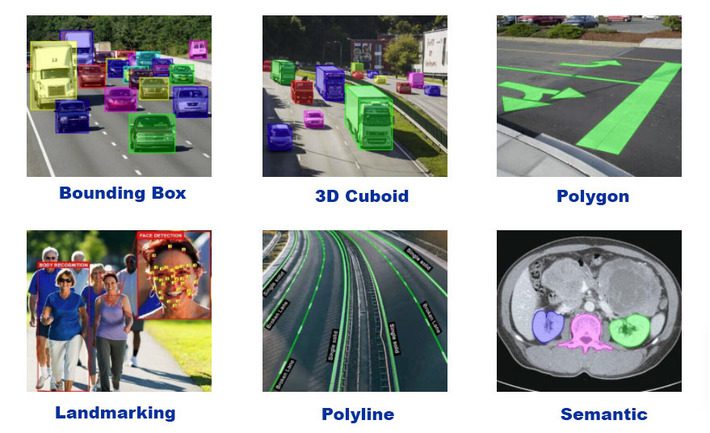 We are aware of how autonomous or driverless vehicles process vast amounts of data to develop the sense of their environment. Computer vision is one of the levels in autonomous cars which analyzes every object on the path and plans the next action for the vehicle and takes the decision as per the learning. Then, there is an underlying safety framework which functions as per the ODD or Operational Design Domain, involving attributes of the operating environment; atmospheric conditions; dynamic elements or moveable objects.
We are aware of how autonomous or driverless vehicles process vast amounts of data to develop the sense of their environment. Computer vision is one of the levels in autonomous cars which analyzes every object on the path and plans the next action for the vehicle and takes the decision as per the learning. Then, there is an underlying safety framework which functions as per the ODD or Operational Design Domain, involving attributes of the operating environment; atmospheric conditions; dynamic elements or moveable objects.
Let us explore more about the available sources of computer vision training data and the types which are primarily implemented to make driverless vehicles and many other computer vision models operate seamlessly.
Computer vision training data usage scenarios
Autonomous vehicles work with deep learning, wherein, data processing is enormous and the requirement for training data runs in millions. Convolutional Neural Networks in deep learning makes use of millions of labelled images. It is crucial to source appropriately labeled training data for deep learning instances, so that the predictions correspond to the vehicle’s movement.
The application of computer vision and machine learning in autonomous vehicles is dependent on a variety of factors. Applying image segmentation technique, in autonomous vehicles, semantic segmentation helps classify the image data for computer vision tasks. The classification of this data should be highly precise and accurate to make the deep learning model successfully render prediction moves. Similarly, if we talk about other computer vision models which have more diverse data requirements then an example of agencies employed to assess disaster management can be considered. Herein, geospatial data is obtained through remote sensing via LIDAR. The collected geospatial data is then annotated using semantic segmentation, wherein each pixel in the image is classified for learning models.
The training data needed will primarily be around semantic segmentation, LIDAR 3D point, and bounding boxes.
Sourcing computer vision learning data
Data is precious in a world driven by digital technologies. In most cases, raw data sourced from various touchpoints require pre-processing, before it can be adopted for data labeling or classification. While preparing any deep learning model for a computer vision task, analyzing the cruciality of predictions and training data need matters. Plus, let’s not omit the accuracy quotient while preparing training data for the learning. For any learning model for computer vision tasks, understanding the scenario of application is supreme. For highest accuracy, the training datasets should be diverse and large enough, precisely annotated.
Let us see some of the data types and datasets used for computer vision training data labeling and annotation.
For computer vision models using ImageNet architecture helps in getting some generic data which enables the model to function. However, this is not sufficient. Pre-training is essential for computer vision techniques of image segmentation and object detection models. There are particular object detection datasets like COCO for pretraining the model. The available dataset is ideal for object segmentation datasets and has over 200K labeled images. Meanwhile, PASCAL segmentation datasets render good accuracy and are available in semantic segmentation. In case if the machine learning project requirement revolves around limited training data availability then building with ImageNet architecture will immensely help.
Open source datasets sources – Google open dataset search, AWS open registry of data and Microsoft Azure open data for usage. Specifically, the data available with Microsoft Azure open data, transportation, health and genomics, population and various common datasets for commencing the model testing and evaluation. However, if the business requirement is more around building a comprehensive Artificial Intelligence solution or a platform then, getting a partner for custom training data labeling will ensure greater accuracy and training success.
Going further with applying the right training data, and when demand for custom data labeling requirement matters, then understanding the computer vision-AI model is paramount. The AI application can have differentiative abilities for diverse tasks; and as discussed above the model might be supporting an autonomous vehicle or be processing geo-spatial data. Another quintessential solution to getting the right data would be to choose a data labeling workforce solution, which is best suitable for businesses with scalable needs. For computer vision data labeling, the workforce solution partner usually performs data need assessment thoroughly, trains an adept workforce while planning and implementing the infrastructural needs. For example, if the labeling involves data augmentation for object detection, then such tasks can be easily completed within a defined time frame. The delivery process also can be molded as per client demand, hence, there is plenty of scope to think scalably with a data labeling workforce solution partner.
Data labeling workforce solution partners like Cogito Tech LLC provide diverse semantic segmentation solutions for computer vision models.
